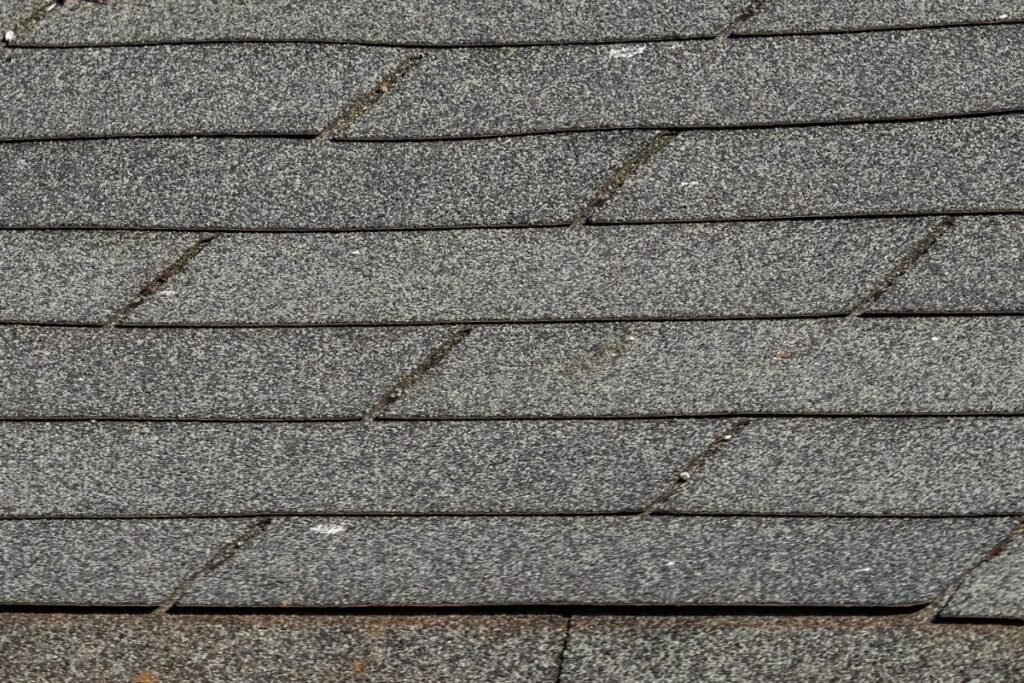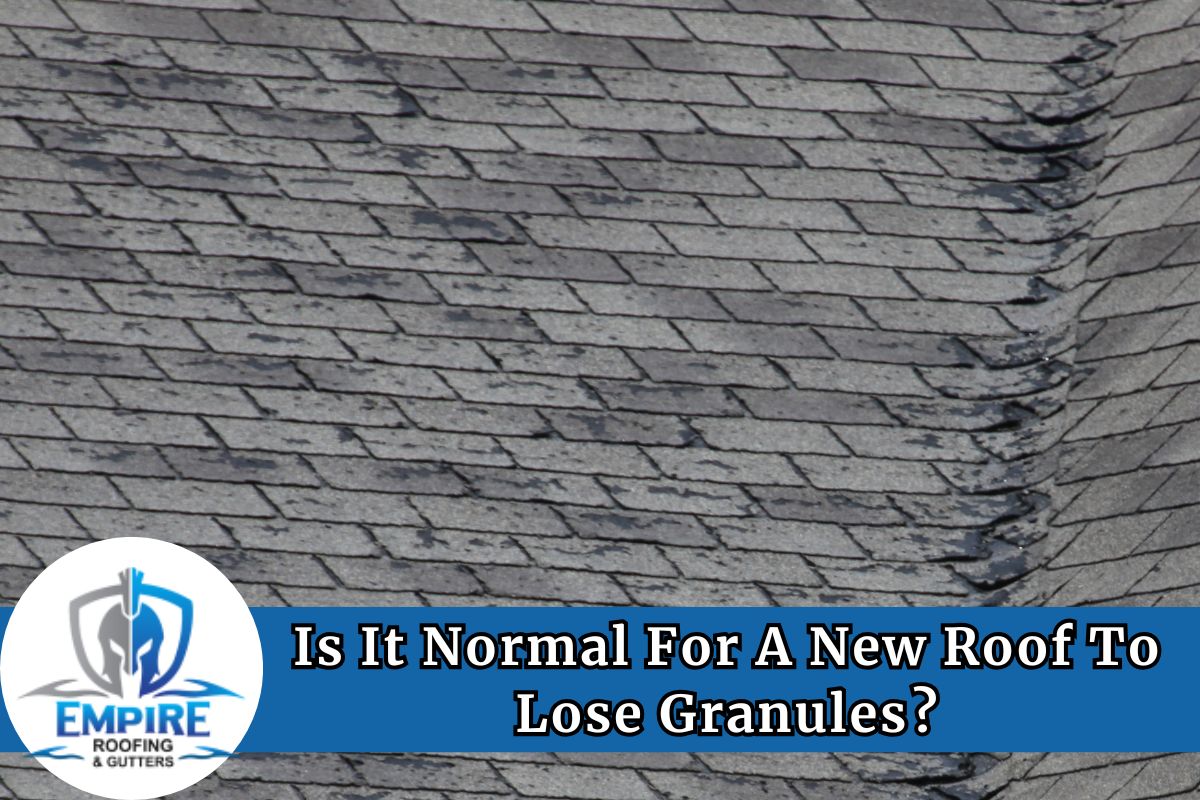Getting a new roof is a big investment, and as a homeowner, it’s natural to wonder how long it will last. One common concern homeowners have after installation is granule loss. Seeing these small particles come off can be quite worrying, raising questions like: is it normal for a new roof to lose granules?
In this blog post, we’ll explain the purpose of roof granules, discuss whether shedding is typical for new roofs, explore the causes, and help you determine when to take action.
What Are Granules On A Roof?
On a roof, granules are tiny pieces of minerals or crushed stone stuck to asphalt shingles. They have multiple important roles. These granules provide UV protection, enhance fire resistance, improve durability, and contribute to the shingles’ overall appearance, making them an essential component of a shingle roof. By shielding the shingles from sunlight and harsh weather, they help extend the roof’s lifespan.
Why Are Roof Granules Important?
- UV Protection: Block harmful rays to stop shingles from aging too quickly.
- Heat Control: Keep shingles cool and prevent warping, helping them last longer.
- Weather Resistance: Protect your roof from rain, hail, wind, and other tough weather.
- Fire Resistance: Offer extra protection against fire risks.
- Algae Prevention: Copper or zinc granules help stop algae growth, keeping your roof cleaner.
- Easy Installation: The rough surface makes handling and moving safer during installation.
Answering The Main Question: Is It Normal For A New Roof To Lose Granules?

Yes, it’s normal for a new roof to shed some granules, especially in the first few weeks. Manufacturers add extra granules to asphalt shingles, and some naturally come loose during shipping, handling, or installation. Rain or foot traffic can also wash them away. This initial shedding isn’t a concern unless the granule loss is heavy or continues over time, which could point to a defect or improper installation.
What Are The Different Factors That Cause Granule Loss On A Roof?
Now that you know what roof granules are, is also important to understand the different factors that cause granule loss.
1. Manufacturing Defects
Issues during manufacturing are the most common cause of granule loss on new roofs. Poor-quality asphalt or weak bonding agents can prevent roof granules from adhering properly to shingles. These issues may show up immediately or over time, and checking warranties or choosing well-known brands can help avoid them.
2. Roof Aging
As roofs get older, they naturally weaken. Asphalt shingles can become brittle due to constant exposure to weather, which affects the adhesive that holds roof granules. This makes them more likely to lose granules as the roof ages. Regular inspections and maintenance are important to catch issues early.
3. Foot Traffic
Walking on a roof, especially if it’s aging or in poor condition, can cause granular loss. Even light foot traffic can dislodge roofing granules, especially on steeper or fragile roofs. To reduce this risk, limit foot traffic and use designated walking paths when accessing the roof.
4. Improper Installation
Poor installation can lead to granule loss. If shingles are misaligned, not properly fastened, or don’t overlap correctly, they’re more likely to lose granules. This can make them more vulnerable to weather damage. Hiring qualified professionals for installation can help prevent these issues.
5. Debris Impact
Falling branches, leaves, or other debris can damage shingles, causing granules to come off. Pressure washing a shingle roof can also remove granules. Clearing debris regularly helps keep the roof intact and prevents unnecessary damage.
6. Weather Damage
Extreme weather is a major cause of granule loss on a roof. Heavy rain can wash away loose roof granules, while hailstorms can leave dents in shingles that knock granules off. Strong winds can also lift shingles, detaching shingle granules. Sun exposure weakens the adhesive that holds granules on the shingle, making them easier to lose over time.
7. Algae Growth
In humid climates, algae can grow on shingles, trapping moisture and weakening the granule bond. Over time, this can cause more granule loss. To prevent this, use algae-resistant shingles or clean the roof regularly.
How to Assess Granule Loss On Your Roof
Spotting granule loss early can help prevent bigger problems. Here’s what to check:
Inspection Schedule
Inspect your roof in spring and fall to check for seasonal wear. Strong winds, hail, and heavy rain can also cause granular loss on roof shingles, so check for damage after storms.
Where to Look
- Gutters and Downspouts: If you see shingle granules in gutters or downspouts, your shingles may be wearing down.
- Roof Surface: From the ground or using binoculars, check for granular loss on a roof, bare spots, or discoloration.
- Edges and Valleys: Water flows more heavily in these areas, making them more prone to granule loss.
What to Look For
- Bald Spots: Missing roof shingle granules expose the asphalt layer underneath, weakening shingles.
- Granule Accumulation: Finding too many granules in gutters or on the ground signals excessive wear.
- Shingle Condition: Cracked, curling, or blistered shingles are more likely to experience granular loss over time.
- Patchy Roof Appearance: If your roof looks uneven or faded, it could be a sign of granular loss that needs attention.
How Much Granule Loss Is Too Much?
Some shedding is normal, but bald spots or lots of granules in gutters are warning signs. Aging, harsh weather, and lack of maintenance can make it worse. If you notice significant granule loss, call a roofer immediately to prevent leaks and structural damage.
How To Repair Granular Loss On Shingles?
If your shingles are losing granules, contractors usually recommend either replacing individual shingles or the entire roof, depending on the extent of the damage. Let’s go over the options:
1. Replacing the Entire Roof
If granular loss roof is widespread, a full replacement may be needed. This is the best option if the shingles are old or severely worn, as replacing individual shingles won’t be enough. A new roof provides better protection and extends the lifespan of your home.
2. Replacing a Few Shingles
For localized granule loss, replacing a few affected shingles can restore your roof. Carefully remove the bare shingles and install new ones that match your roof. Calling a professional for help is recommended when working on your roof.
When Should You Be Concerned About The Granule Loss On Your Roof?
If you notice these warning signs, it might be time for professional intervention.
1. Excessive Granule Buildup
Large amounts of roof granules collecting in gutters, downspouts, or on the ground could indicate shingle deterioration.
2. Bald Spots on Shingles
If shingles have granule loss, you might notice smooth or shiny patches where the protective layer is gone.
3. Color Differences
Shingles that look lighter or faded compared to others might be losing roof shingle granules, exposing the asphalt beneath.
4. Widespread Granular Loss
If granule loss on a roof is affecting large areas, your roof may be wearing down unevenly.
5. Rough Shingle Texture
If shingles feel rough or sandy, they may be shedding roof granules faster than usual.
6. Deteriorating Shingles
Cracking, curling, or splitting shingles often accompany granular loss on roof shingles, signaling a need for repairs.
7. Water Damage Signs
Granule loss on a roof can weaken its protective layer, leading to leaks or moisture damage in your attic or ceiling.
How to Protect Your Roof From Granule Loss?
Taking care of your roof can slow down or even prevent granule loss. Here’s how to keep it in top shape:
1. Inspect Your Roof Regularly
Check your roof twice a year (spring and fall) for bald spots, granule loss, or signs of damage. Focus on areas where water collects or shingles show signs of wear.
2. Keep Your Roof and Gutters Clean
Clear away leaves, moss, and algae to prevent moisture buildup. Clean gutters to stop granules from clogging drainage systems.
3. Avoid Walking on the Roof
Minimize foot traffic, as walking on shingles can loosen granules and cause unnecessary wear.
4. Use High-Quality Roofing Materials
Invest in durable, weather-resistant shingles that hold up against harsh conditions. Work with a professional roofer to ensure proper installation.
5. Apply Protective Roof Coatings
Roof sealants help lock in granules while protecting against UV damage and moisture.
6. Prepare for Harsh Weather
If your area is prone to hail or heavy storms, consider impact-resistant shingles or storm guards for added protection.
Get a Strong, Durable Roof with Empire Roofing & Exteriors!
Your roof is a significant investment, so don’t take it lightly. Granule loss, particularly after installation, is a typical worry, but professional installation can mitigate this concern.
To reduce shedding and increase the lifespan of your roof, our team at Empire Roofing & Exteriors guarantees quality work for all of our roofing services. To protect your investment, we only use premium materials and follow all manufacturer specifications. Call us at (225) 347-8877 to schedule a consultation for professional roofing services.
